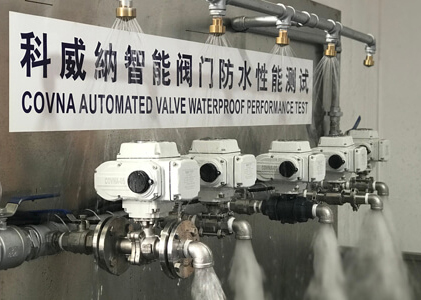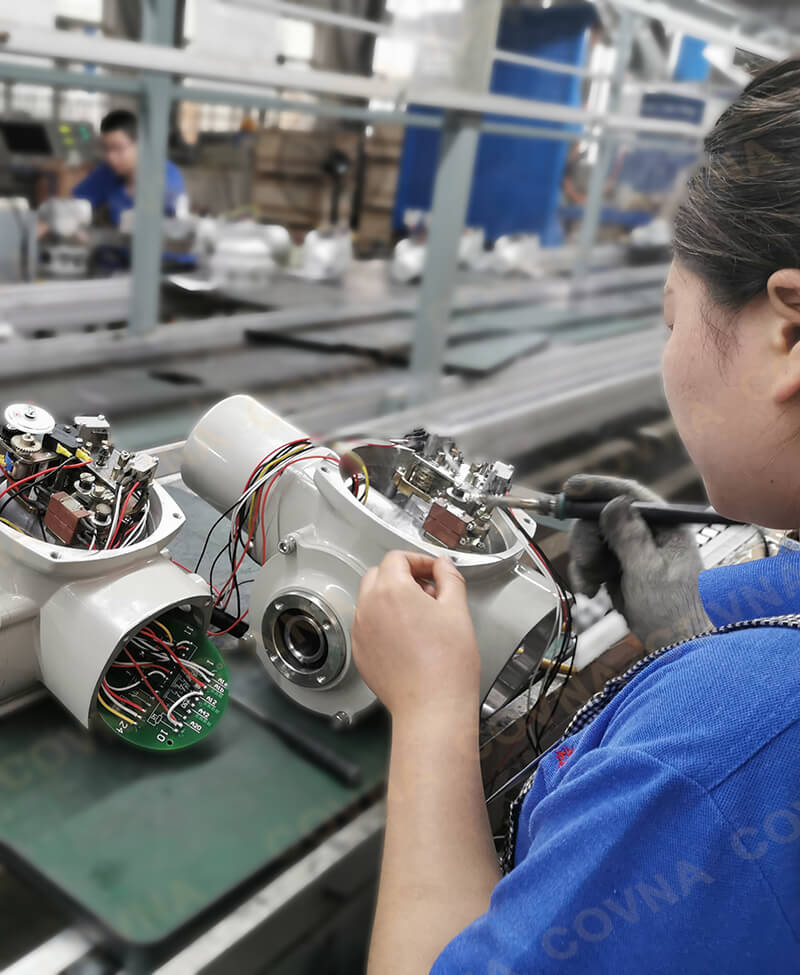Electric Actuator Valve action distance is larger than ordinary valve, electric valve switch action speed can be adjusted, simple structure, easy to maintain, in the course of action because of the buffer characteristics of the gas itself, not easy to be stuck and damaged, and its control system is also more complex than the electric valve. Valves of this type shall generally be installed horizontally in the pipeline.
The electric actuator valve device is indispensable equipment to realize the program control, automatic control and remote control of the valve. Its movement process can be controlled by stroke, torque or axial thrust. Since the operating characteristics and utilization rate of electric valve devices depend on the type of valve, the operating specifications of the device and the position of the valve on the pipeline or equipment, therefore, the correct selection of electric Valve devices, it is essential to prevent overload, where the working torque is higher than the control torque. In general, the correct choice of electric valve devices is based on the following:
The operating torque is the most important parameter to select the electric valve device. The output torque of the electric valve device should be 1.2 ~ 1.5 times of the valve operating torque.
There are two main engine configurations for the operation of thrust-operated electric valve devices: one with direct torque output without a thrust disk, and the other with a thrust disk with an output torque converter to output thrust by the stem nut in the thrust disk.
Output shaft rotation number electric actuator valve device output shaft rotation number of the number of turns with the nominal diameter of the valve, valve stem pitch, number of threads, calculate in terms of m = H / Zs (M is the total number of turns that the electric device should satisfy, H is the valve opening height, S is the stem drive thread pitch, Z is the stem thread head) .
Stem diameter for multi-rotary stem valves, can not be assembled into an electric valve if the maximum stem diameter allowed by the electric device can not pass through the stem of the supplied valve. Therefore, the electric device hollow output shaft diameter must be greater than the stem stem stem stem diameter stem valve. For some rotary valves and non-return valve stem valves, although do not consider the stem diameter through the problem, but in the selection should also fully consider the stem diameter and keyway size, so that the assembly can work properly.
Output speed valve opening and closing speed if too fast, easy to produce water hammer phenomenon. Therefore, should be based on different conditions of use, the selection of the appropriate opening and closing speed.
Electric actuator valve devices have their special requirements, that is, must be able to limit the Torque or axial force. Normally electrically operated valve installations use a torque-limiting coupling. When the electric device specification is determined, its control Torque is also determined. Generally in a predetermined period of time, the motor will not overload. However, overloading can occur when the power supply voltage is low and the required torque can not be obtained to stop the motor from turning, or when the torque limiting mechanism is incorrectly set so that it is greater than the stopping Torque, resulting in a continuous overtorque, to stop the motor from turning; three, intermittent use, resulting in heat accumulation, which exceeds the allowable temperature rise of the motor; four, because for some reason the torque limiting mechanism circuit breaks down, causing the Torque to be too large; five, the use of excessive ambient temperature, the relative heat capacity of the motor decreases.
In the past, the methods of motor protection are using fuse, over-current relay, thermal relay, thermostat, but these methods have their advantages and disadvantages. There is no absolutely reliable protection for such variable-load devices as electric installations. Therefore, we must adopt various combination methods, summed up there are two: one is the motor input current to judge the increase or decrease, the other is the motor itself to judge the heating situation. In either case, the given time allowance for the thermal capacity of the motor must be taken into account.
In general, the basic methods of overload protection are: to protect the motor from a continuous operation or point-to-point operation, using a thermostat; to protect the motor from blocking rotation, using a thermal relay; to protect short-circuit accident, using a fuse or over-current relay.
Post time: Jul-28-2021






